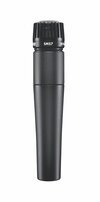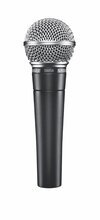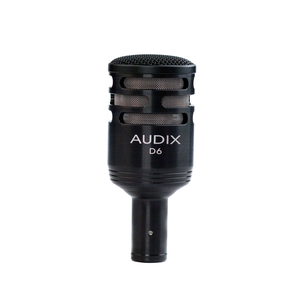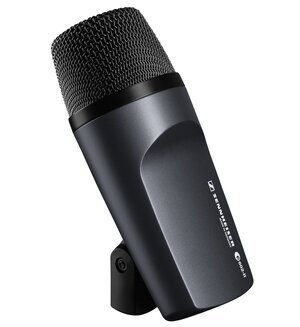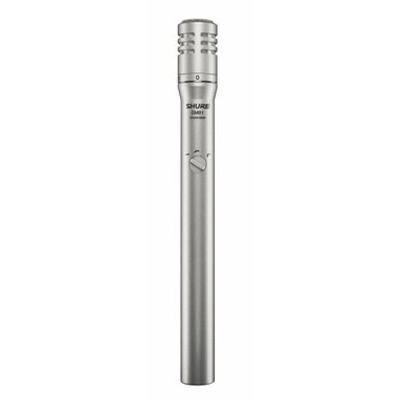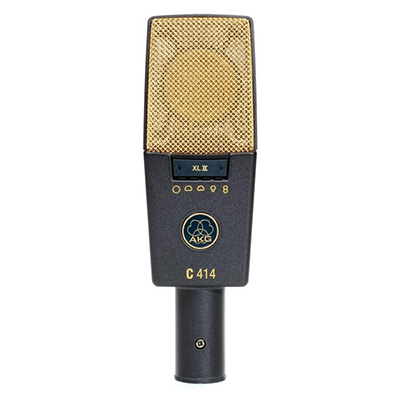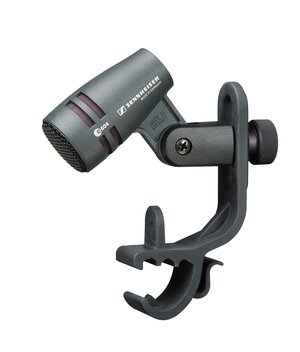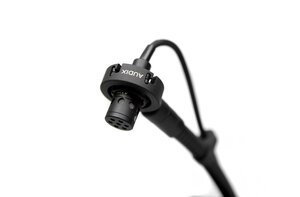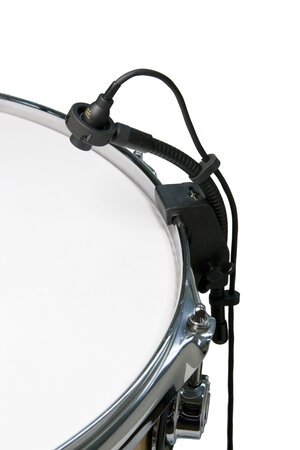073 - Mic Choice in Live Sound
We have many options for microphones, but some tend to work better in certain situations.
Written by Scott Adamson
Microphones are a common type of transducer — a device that converts one form of energy into another. Broadly speaking, they all work the same way. An acoustic sound wave vibrates a diaphragm inside the microphone. This diaphragm is a thin piece of material, often aluminum, gold or even plastic, that, when vibrated, induces a small electrical signal which is then amplified.
Because the electronics are a bit different for each type of microphone, they’re often categorized into three different groups: dynamic, condenser and ribbon. Most engineers have preferences for what sounds best on a given sound source, but with the fast workflow of live sound, we often follow some general guidelines.
Let's start with the most common type of mic we use — dynamic. These are great for live music for several reasons. First of all, they're affordable. You can get a decent quality dynamic mic for less than $100.00. They tend to be durable, as well, so you can take them on tour and they’ll withstand getting dropped a few times.
We often use dynamic mics when the mic must be placed close to an instrument that’s particularly loud. Because of their design, they can handle especially high signal levels. Horns, drums, guitar amps, keyboard amps, and loud vocals are all great sound sources for a dynamic mic.
Shure’s SM57 and SM58 are two classic examples of dynamic mics — and probably the two most frequently used mics in the world, found at pretty much every concert venue on the planet. There are also dynamic mics designed with larger enclosures, like the Audix D6 and the Sennheiser e602, that can help pick up low frequencies. These are especially useful for kick drum, floor toms, bass guitar, or lower brass instruments like tuba.
Condenser mics are a bit different. They're generally more expensive, but they're also a lot more sensitive than dynamic mics. If you’re working with a quieter sound source, like a violin, for example, a condenser mic is going to pick up sonic details that you might miss with a dynamic mic.
Think of a choir or group background vocals. Because they’re more sensitive, condenser mics can be placed farther away from the singers, allowing you to capture more people per mic and ultimately, achieve a fuller, more well-balanced sound out of the whole group.
Condenser mics can also be great for acoustic instruments with quieter outputs, like guitar or piano, because the heightened sensitivity will help you get a stronger signal. They can be quite effective on vocals, too, especially for softer singers and mellower music like folk and certain kinds of jazz. However, there is one really important consideration here. In addition to picking up the finer details of the vocals, they’ll pick up more of the sound on stage. If the stage volume is particularly loud, this could pose a problem. The sound of someone's voice is much quieter than someone thrashing on cymbals or wailing through a guitar amp. If you're turning up a condenser mic on stage, especially a vocal mic that needs to be high in the mix, it will pick up the surrounding ambient noise, as well.
Condenser mics need phantom power. Without power, they won't work. Phantom is a way to send that power through the mic cable. It's 48 volts of direct current that’s turned on or off on the channel strip with a button marked something like +48 or 48v. It doesn't hurt a dynamic mic to have phantom power turned on, but it's better audio practice to keep it off. When turning phantom power on or off for a condenser mic, it’s imperative to keep that channel muted or else it will make a loud pop, which can potentially damage speakers.
Two popular condenser mics are the small diaphragm Shure SM81 and the large diaphragm AKG C414.
Get real-world live sound mixing tips straight to your inbox.
Let’s think about drums. Mic choice will vary widely based on the kit and the genre of music, but there are a few specific mics made for drums that can help you lock in a solid sound a little more easily. Take a typical drum setup for pop music.
We’ve mentioned using certain dynamic mics on kick drums, but a lot of engineers also use a type of condenser called a boundary mic inside the drum. Especially for hard rock or metal music, this is one way to get a nice, tight kick sound. Experiment with blending the two - usually called kick in and kick out - to get a well-balanced combination, but don’t forget about phase! (Remember that two mics on the same instrument can cause phase cancellation.)
Though you often see a dynamic mic, like an SM57, on the snare, there are mics made specifically for toms. These can either be dynamic or condenser and are made with clips built onto the mic so they’re easy to clamp directly onto the drum. Shure and Audix, for example, make small condenser mics for this purpose, and Sennheiser makes dynamic ones.
For the hi-hat and the overhead cymbal mics, many people use condensers when available. This will help keep a smoother cymbal sound while the dynamic mics we use close up on the drums will handle the high volumes without clipping, like a condenser likely would.
The other type of mic you see once in a while in live sound is a ribbon mic, though this didn't really start happening until much more recently. Traditionally, ribbon mics were very fragile and couldn't stand up to live shows. Plus, if you engage phantom power on a ribbon mic, it can totally destroy it. However, they sound really good on certain instruments! It's common to use them on organs or other instruments that have a smoother sound, though I often use a stereo pair of Beyerdynamic M160s as overhead mics or on guitar amps. Lucky for us, modern ribbon mic design is way more durable than it used to be and much better equipped to be used on stage.
Keep in mind that mic choice is a very personal preference. Your top picks and mine may be totally different and that’s okay! There are many ways to dial in a great sound.

